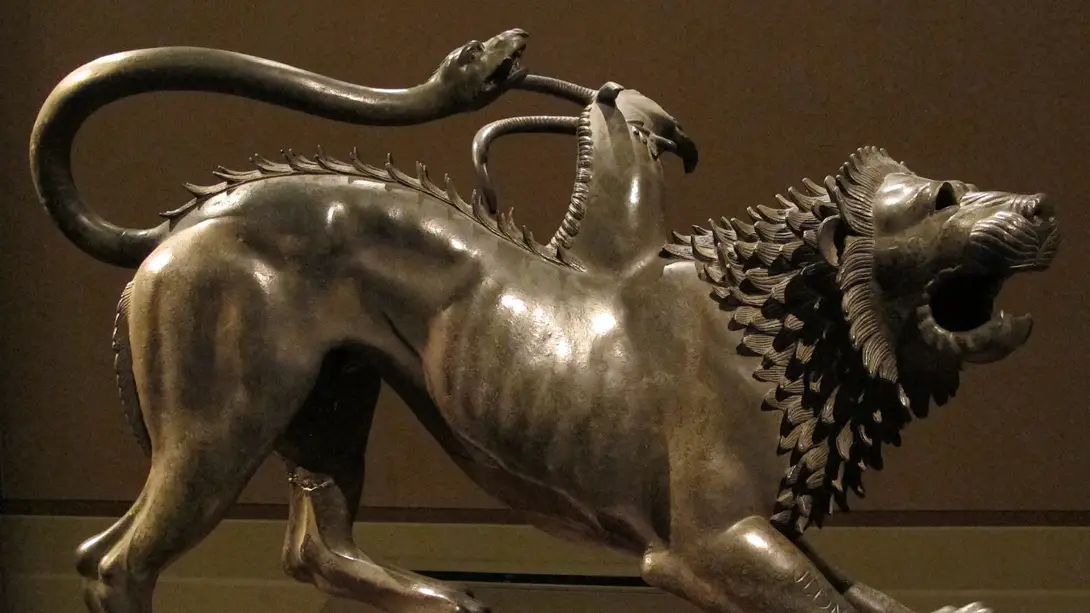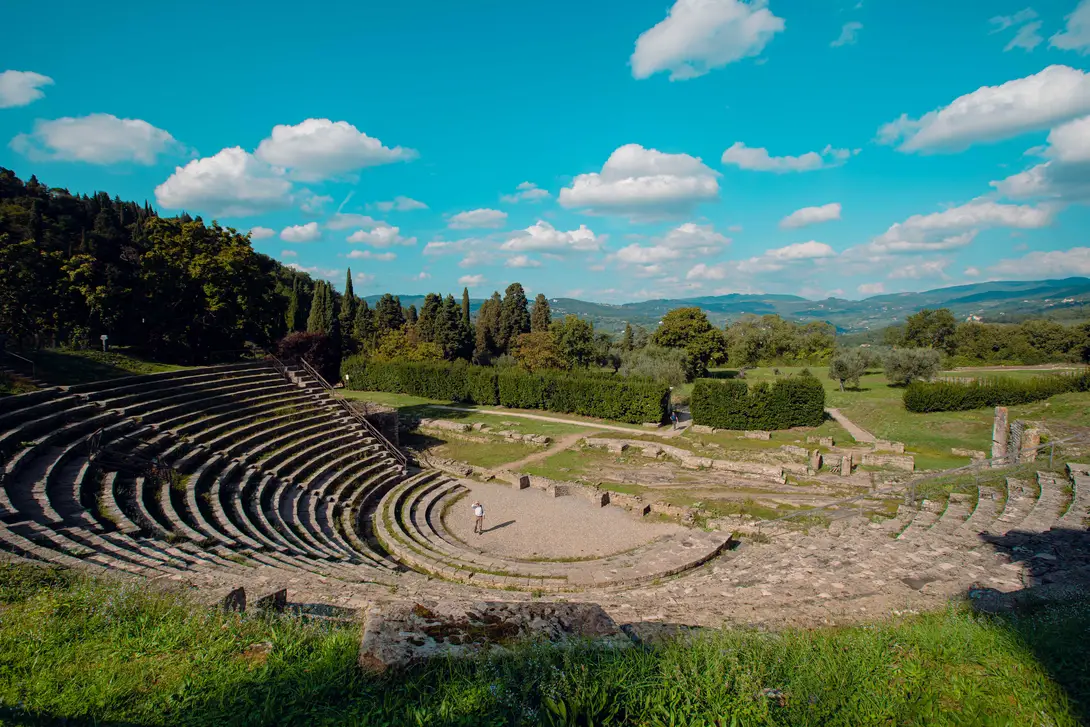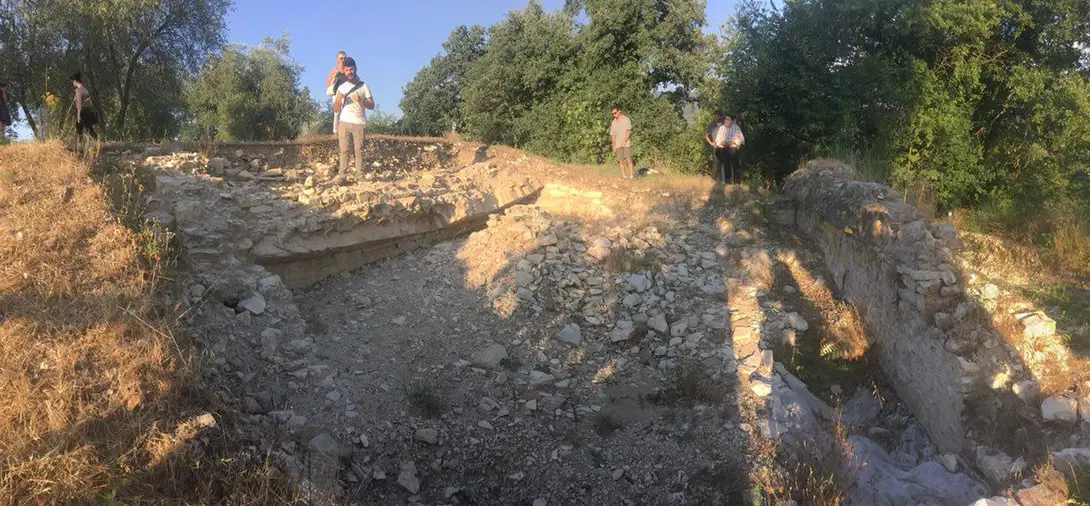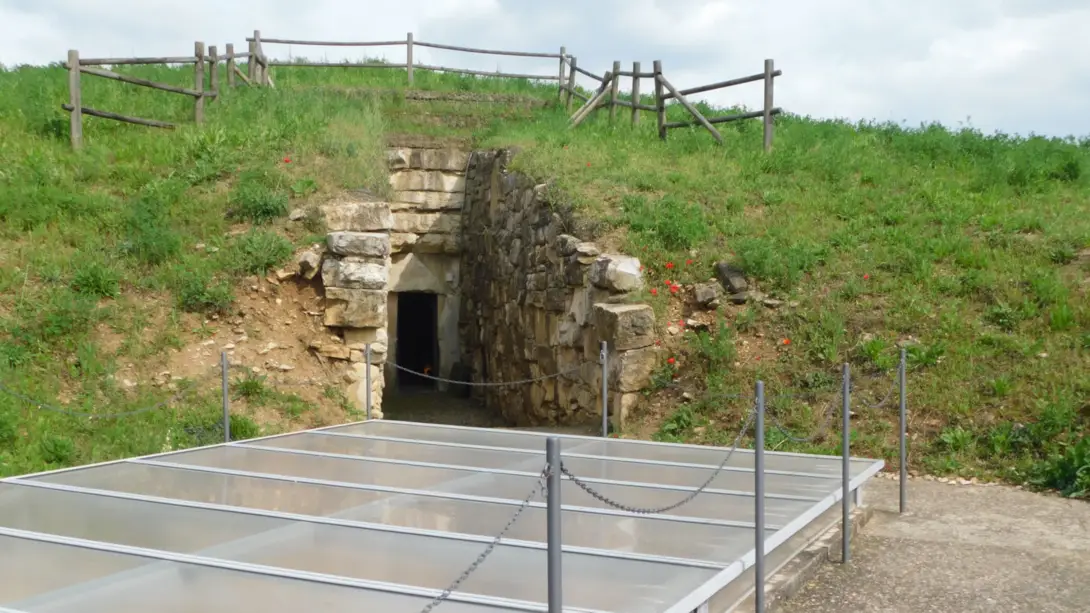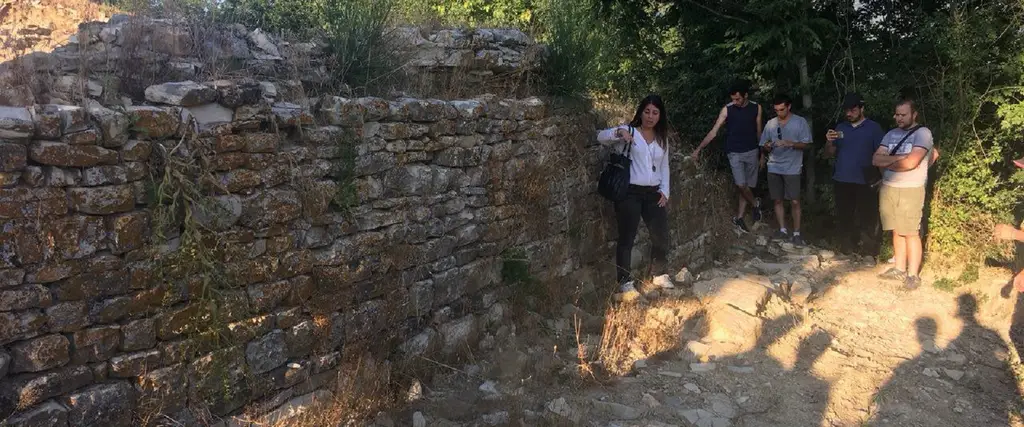
Petit itinéraire archéologique
Se retourner et rechercher les traces de notre passé est une activité utile pour explorer notre territoire. Étrusques, Romains, Moyen Âge : connaissez-vous les sites archéologiques des environs de Florence ?
Ce petit itinéraire nous conduit à la découverte des civilisations anciennes, vers nos ancêtres qui ont habité cette terre, labouré ces champs, travaillé cette pierre, planté ces arbres.
Commençons par Florence, où se trouvent plusieurs institutions importantes telles que le Musée archéologique national ou les fouilles cachées, celles que l'on ne voit pas car elles ont été recouvertes par les couches de la ville qui, siècle après siècle, s'est construite par-dessus. Il s'agit de la cathédrale Santa Reparata, datant du Moyen Âge, dont la crypte située sous l'actuel Duomo peut être visitée, ou encore du Théâtre romain qui se trouve juste sous l'imposante silhouette du Palazzo Vecchio.
Nous nous rendons à Fiesole, où les vestiges étrusques puis romains ont été admirablement conservés et sont exposés, dans la zone archéologique et au musée, à tous les visiteurs qui restent enchantés par ce lieu.
Nous quittons la ville en direction du Valdarno, plus précisément dans la commune de Rignano sull'Arno, où se trouve, dans les domaines de la Fattoria di Pagnana, le site archéologique du Castelluccio, un petit château médiéval qui servait autrefois de résidence.
Quant à la région dite « Piana », c'est-à-dire la zone à l'ouest de Florence, on y trouve le majestueux exemple des tombes étrusques à tholos, en particulier dans la commune de Sesto Fiorentino, la tombe de la Montagnola.
Notre petit itinéraire se termine à Campi Bisenzio, au musée archéologique de Gonfienti, dans la Rocca Strozzi : on y trouve des vestiges de trois époques, l'âge du bronze, la période étrusque et la période romaine.
Comune di Rignano sull'Arno
Les lieux
Étapes
Musée Archéologique National
Le Musée Archéologique National est situé dans le Palazzo della Crocetta du XVIIe siècle, le palais qui abrite depuis le XIX siècle les collections d'antiquités Médicis et Lorraine provenant de la galerie des Offices.
Le noyau principal est constitué par les témoignages de la civilisation étrusque, dont les grandes statues en bronze de la Chimère et de l'Arringatore (Orateur), avec une riche section consacrée aux sculptures funéraires (sarcophages et urnes, representant les mythes et les morts couchés au banquet de l'Au-delà) et aux vases grecs, dont beaucoup ont été découverts dans les riches tombes aristocratiques de l'Étrurie. Parmi ceux-ci, le grand cratère attique à figures noires connu sous le nom de Vase François (du nom du découvreur), décoré de nombreux sujets mythologiques.
Le musée possède des exemplaires uniques au monde de bronzes étrusques et romains, de pierres précieuses, de camées et de pièces de monnaie anciennes ayant une grande valeur historique et artistique. Le patrimoine de la section "Musée égyptien", le deuxième en Italie après celui de Turin, est constitué de restes découverts lors de fouilles menées par une expédition franco-toscane en Égypte en 1828. La collection comprend des vases, des sculptures, des sarcophages avec momies, papyrus, amulettes et petits bronzes de différentes époques, de la préhistoire au début de l'ère chrétienne.
Dans le jardin du palais on peut admirer des tombes et des sarcophages démontés de leur nécropole d'origine et remontés ici. Le jardin ne fait pas partie du parcours de visite du musée.
Le musée est adapté aux enfants, d‘âge scolaire surtout; des ateliers et des activités y sont périodiquement organisés pour les familles et les jeunes visiteurs.
Cripta di S. Reparata (interno Cattedrale)
De l'intérieur de la Cathédrale de Santa Maria del Fiore on accède aux fouilles archéologiques qui ont mis au jour les restes de l'ancienne église Santa Reparata, témoignage de la première chrétienté à Florence, démolie après l'achèvement de la nouvelle Cathédrale. Datant du VIe siècle, avec des modifications ultérieures à l'époque romane (ajout de la crypte), l'église est restée en service même pendant la construction du nouveau bâtiment.
On y trouve aujourd’hui des vestiges de l’époque romaine et médiévale, des plaques tombales et des fragments du sol en mosaïque polychrome avec des décorations géométriques. C’est ici que l’architecte de la Coupole de la Cathédrale, Filippo Brunelleschi, est enterré.
Palazzo Vecchio - Fouilles du théâtre romain
Le Palazzo Vecchio s'élève au-dessus des vestiges de l'ancien théâtre romain de Florentia. Il suffit donc de descendre quelques marches pour remonter le temps!
Le théâtre avait une capacité d'environ 10000 personnes, et un diamètre extérieur de 100 mètres ; la cavea était orientée vers Piazza Signoria, la scène vers Via de' Leoni.
Il fut construit à l’époque de la fondation de Florentia et agrandi au début du IIe siècle apr J.-C suite à l'augmentation considérable de la population et au développement urbain.
Jusqu'au Ve siècle il accueillit principalement des pièces en prose - contrairement à l'amphithéâtre, qui était situé dans le quartier de Santa Croce.
Ensuite il fut malheureusement dépouillé et certaines pièces comme les "Burelle", les couloirs radiaux sous la cavea, furent destinées à un usage impropre.
Lors de prémières fouilles au XIX siècle on découvrit des restes de la Cavea ; ce n’est ‘à la suite d’importantes fouilles archéologiques (achevées en 2010) qu’il a été ouvert au public.
Musée Archéologique et Théâtre Romain de Fiesole
Le Parc archéologique témoigne de l’histoire ancienne de la ville de Fiesole et de son territoire : la présence de l’homme dans cette zone remonte au moins à l’âge du bronze (environ 2000 av. J.-C.), tandis que la ville naquit vers la fin du IVe siècle av. J.-C. Fiesole fut une colonie étrusque très importante : sa position était stratégique pour le contrôle des voies de communication entre l’Étrurie du sud et les colonies étrusques de la Val Padana, un bastion contre les invasions des peuples du nord (surtout des Gaulois). En 80 av. J.-C., Fiesole devint une colonie romaine, tout en conservant ses caractéristiques de ville étrusque : en effet, les Romains s’installèrent plutôt dans la vallée et fondèrent Florence.
Le musée est relié au Parc archéologique, où on peut visiter les fouilles du théâtre, des thermes et du temple étrusque-romain. Le parcours du musée comprend aussi la Collection Costantini, exposant des anciens vases grecs et étrusques ainsi qu’un tombeau lombard entièrement reconstruit. On y trouve des bronzes d’époque étrusque, des céramiques grecques et étrusques aux décorations noires et rouges, ainsi que des frises en marbre du Théâtre Romain.
Il Castelluccio - archaeological site
The archaeological area of Castelluccio occupies a small hill in the relief overlooking the Valdarno area of Rignano.
Given its proven nature as a sealed stratigraphic deposit, the presence of significant elevations and the availability of documentary sources represents a valuable historical and archaeological evidence of the birth, development, abandonment and repopulation of a fortified settlement which, in addition to being a significant nucleus of aggregation since the 11th century, played an important role during the central centuries of the late Middle Ages, as part of the conquests of the countryside made by Florence.
The importance of this castle, in a territory characterized by a scattered population, where the percentage of sites with remains of medieval settlements is very high, is given in particular by its strategic position to control the ford on the Arno and the ancient road network to reach the Florentine plain.
Etruscan Tomb of La Montagnola
Since centuries in Quinto, on the slopes of Monte Morello, there rises La Montagnola (the little mountain) - a mound of earth which due to its regular shape, had long suggested an artificial origin. In 1959, excavation works led to the discovery of an Etruscan tomb among the largest yet known.
The tomb dates back to the second half of the 7th century BC and is part of a series of archaeological sites - including the nearby tomb of La Mula - which testify to an ancient Etruscan presence in what today is the territory of Sesto Fiorentino.
It is a thòlos tomb made up almost entirely of large blocks of alberese limestone, and buried beneath an imposing mound of earth. Roughly circular at its base, the mound has a perimeter of about 125 meters, and a diameter of about 70 meters.
The interior of the tomb is accessed from the external dromos, an open-air corridor made of stone blocks. The corridor extends for 14 meters up to the entrance of the internal dromos, which continues inside for about 7 meters more.
Facing each other, two rectangular burial chambers open out from the middle of the internal dromos. By the entrance of one of these chambers, there is a large stone slab which feature - vaguely visible to the naked eye - traces of paintings depicting animals and ornamental motifs, along with some writings in the distinctive Etruscan alphabet.
The internal dromos leads to the entrance of the thòlos - a large circular burial chamber, with a diameter of about 5 meters and of equal height. This chamber is constituted by an ogival dome, made up of massive blocks of alberese limestone. At the centre of the thòlos lies a pillar made of tuff blocks, originally covered with clay and dark stucco; the pillar has no load-bearing function: it could have had, rather, an astronomical or religious function.
The tomb was found to have already been desecrated in the centuries before its discovery. In spite of this, archaeologists recovered a number of objects which, due to the quality of the materials and decorations, testify to the wealth and rank of the proprietary family. These objects are identified with the Orientalizing Etruscan period (spanning from the 7th to the 6th century BC), and are now preserved in the National Archeological Museum of Florence.
In 2001, during works of renovation, the foundations of a secondary tomb were discovered right before the entrance of the main tomb. Dating to the first half of the 7th century BC, and much more modest in size, this second tomb consisted of a single rectangular cell subdivided into two rooms.
Archaeological Museum of Gonfienti
Open since July 2022, the museum collects the archaeological remains that were found in the archaeological site of Gonfienti, between the municipalities of Prato and Campi Bisenzio and is located inside the Rocca Strozzi, that has been made available by the Municipality of Campi Bisenzio to the Superintendence of Archaeological Heritage of Tuscany.
The visitor route follows the three periods in which the site of Gonfienti was inhabited: the Bronze Age, the Etruscan period and the Roman one, with remains datable from the 16th century B.C. to the 4th century A.D.
The excavation campaigns have shown that Gonfienti was one of the largest settlements of Northern Italy, and it was inhabited continuously from the 16th to the 13th century B.C.; the numerous ceramic findings that were rediscovered testify to the daily activity of the village, especially for the production, preservation and consumption of food.
The vast Etruscan settlement, founded between the 6th and 5th, was organised according to a regular urban model; standing out among the various sectors that have been explored to date is the large residential building of Lot 14, that is developed on a rectangular plan of over 14000 sqm; the roof of this building, with tiles and antefixes of fine workmanship, has been reconstructed.
Even the Roman settlement has given us traces of a large building of imperial Roman times, with a series of rooms overlooking a central courtyard; on display is a portion of the "Tabula Peutingeriana" from this era, the ancient Roman map that shows the road system in the territories of the Empire.
